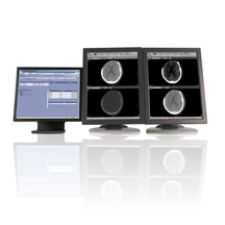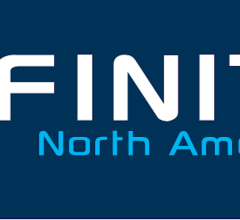
GE Healthcare's Centricity Imaging PACS/AW Solution Centricity Imaging-AW Suite 2.0 combines with the Centricity Imaging-PACS 3.0 solution.
I wonder if any vendor, radiologist or IS technology guru really imagined that the Electronic Medical Record (EMR) could realistically become a seamless part of the complicated world of Picture Archiving and Communications Systems (PACS) and Radiology Information Systems (RIS). In reality, the integration requirements of these individually complex systems strongly suggests that the marriage of these component pieces requires an interface strategy and an implementation to-do (or must-do) list that defies normal information system capabilities and user-required functions.
That said, it is quite remarkable to be involved in an era of ultra-technology capability that not only makes this seemingly impossible feat possible – but alas, makes it look easy with some vendor applications. Without a doubt, the current marketplace for EMR integration within the PACS/RIS environment could hardly be better. There seems to be a proliferation of practical applications for virtually every aspect of the need to collect, merge, interpret, store and retrieve patient information regardless of its source of collection or distribution within the clinical and/or clinical support arenas of medicine.
That is not to say that all vendor solutions are the same. Despite the mega-leaps in EMR integration capabilities in existence today, there are still Neanderthal technological applications being offered that continue to test the limits of patience of even the most dedicated physicians and technologists. That is why it is becoming increasingly more important to adequately address the upfront expectations and needs of the various constituents within the radiological departments when deciding which vendor solutions are the best fit for an institution.
EMR Integration Within the PACS/RIS Environment
Quality EMR integration within an existing and/or emerging PACS/RIS environment necessitates a thorough understanding of the complicated technology requirements inherent in providing clinicians and other users with seamless workflow, while simultaneously meeting information security requirements without incurring detrimental information input or throughput errors related to patient care and/or fiscal management responsibilities.
Vendors have created a wide variety of applications that make sophisticated and trustworthy EMR integration within the PACS/RIS environment possible. For instance, some vendors have adopted voice recognition technologies and digital dictation capabilities that allow radiologists to perform their myriad of duties from one workstation or desktop platform. Similar workflow enhancement applications exist that allow for near-time or real-time usage of information that is available simultaneously to what is done within the modality applications or within the support service arenas.
User-friendly worklists and application-enhancement tools as well as diagnostic and report-creation or generation tools provide radiologists, technologists and other critical gatekeepers with functionality and responsibility-based actionable support that thereby improves patient care quality and timeliness. These applications also tend to be more efficient than traditional approaches and help to eliminate omission or input errors that are generated with normal treatment patient-care handoffs between clinical departments and service support arenas.
Many vendor solutions currently available in the marketplace also allow for increased consolidated image management functions. Fortunately, the cost of archival storage has been on a steady decline in recent years and there are a host of low-cost alternatives available to meet just about any administrative, clinical or fiscal need. Image and information compression services and functionality also abounds within many of the current vendor solutions to include linking, routing and distribution image management functions.
Open Architecture for Scalability
Perhaps one of the best trends that is becoming commonplace within EMR integration functionality and the PACS/RIS environment is the ever-increasing reliability and dependability of the software and hardware infrastructure components. Vendors are becoming more and more dependent on open architecture frameworks that allow for increased scalability of applications and usage as well as increased opportunities for future growth of these systems.
This is great news for the IS/IT community especially in terms of PACS systems. Without a doubt, in years past, PACS components tended to be radiology specific and not congruent or at least not affordably congruent with other applications within the healthcare enterprise. Current trends within the PACS environment are moving toward storage management and retrieval applications that are easily adaptable to a myriad of other sister departments and uses.
Integrated functionality within the EMR environment is an absolute must and should be one of the most important aspects of any purchase decision and/or upgrade decision within a PACS/RIS arena of care. True integrated functionality affects healthcare decision making timeframes and definitely impacts the quality of care given and the costs associated with that care. Poor integration functionality costs real dollars and should be part of the decision-making mindset of the purchasing constituents. In other words, the quality of EMR and PACS/RIS integration directly affects the cost of care and should be considered a major part of the vendor selection criteria.
Point-of-Care Patient Information
One of the most exciting trends facing the EMR integration marketplace within the PACS and RIS technology venue is the growing emphasis related to standards-based compatibility in regard to patient information access at the point of care, regardless of whether the point of care was initiated in the same building or three thousand miles away.
This growing emphasis of point-of-care access to other related patient care information is pushing the vendor community to create integrated solutions that are much easier to align with other operating systems and functions. Interoperability with other systems is becoming the new “mantra” that is being touted by old and new vendors alike. This is great news for hospitals and health systems and similar care giving institutions that are finding it more and more necessary to integrate with others, even competitors within the care giving marketplace.
Seamless connectivity is not just a hollow promise any longer. Vendors are promising and delivering on EMR connectivity and integration within the PACS/RIS environment that would have seemed impossible even a couple of years ago. The days of limited information sharing between vendors is becoming less and less a reality with each passing year. Without a doubt, long-term profitability and sustainability within the vendor community is becoming more and more necessitated by their ability to provide seamless connectivity across the healthcare enterprise. There are probably many reasons for this new direction in the marketplace, one of which is likely the continual march toward a nationwide health information network.
Broker Applications
Politics aside, patient care quality is reason enough for healthcare institutions and caregivers to continue marching forward to the tune of integrated EMRs that are part of a host of applications related to seamless connectivity. Perhaps the biggest obstacle to the future of seamless EMR integration will be the archaic stand-alone PACS applications of yesteryear. As older generation PACS applications retire from usage, it is likely that EMR integration will continue to blossom into the next wave of seamless connectivity within the healthcare industry.
On that note, another interesting trend that is emerging with the EMR and the PACS/RIS environment is the creation of a number of broker applications that allow for older generation software and hardware issues to be resolved through the pass-through interpretation and redistribution of formerly proprietary PACS information and functions. This should be good news for frustrated IT professionals who frequently are limited by the vendor’s lack of seamless protocols related to other vendor products and applications. Stand-alone applications have historically remained just that because of the inherent risks of corrupting information that cannot be redirected or reinterpreted through another sister technological pipeline.
As can be expected, perhaps the biggest obstacle to seamless connectivity within the EMR and the PACS/RIS environment is vendor posturing within a healthcare setting. Vendor posturing refers to the inherent benefit to a particular vendor to maintain a “foot-in-the-door” within a healthcare delivery setting. It is important for clinicians and administrators to realize that many vendors have the “ability” to provide seamless applications, but do not always have the “desire” to do so because of their competitive posture within the marketplace. For this reason, it is imperative that purchasing authorities create an environment for competition that ensures that the rules of engagement for successful bidding for a project includes the willingness of the vendor of choice to provide a seamless corridor for the use of any and all possible choices for individual applications within the EMR and/or PACS/RIS operating environment.
In today’s marketplace, that requirement is not nearly as difficult to achieve as it was five or 10 years ago. In truth, many vendors today are facing up to the changing reality that seamless integration and connectivity is a must-have ingredient for the emerging healthcare marketplace. It is truly a great time to be in the marketplace to purchase an integrated EMR application for your PACS/RIS environment. Perhaps the day will come when all the applications available in the marketplace will come equipped to integrate successfully with all other vendor applications. Until that time, do your homework and make sure you get the system applications you need to be a first-class enterprise for the foreseeable future.


 April 11, 2024
April 11, 2024 








